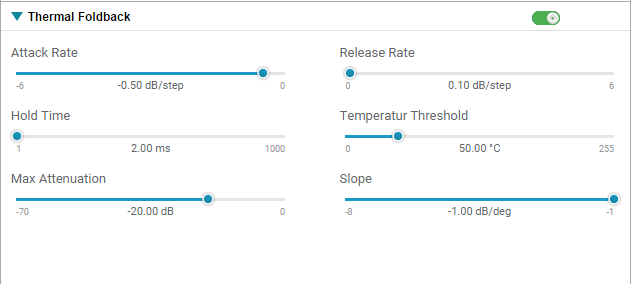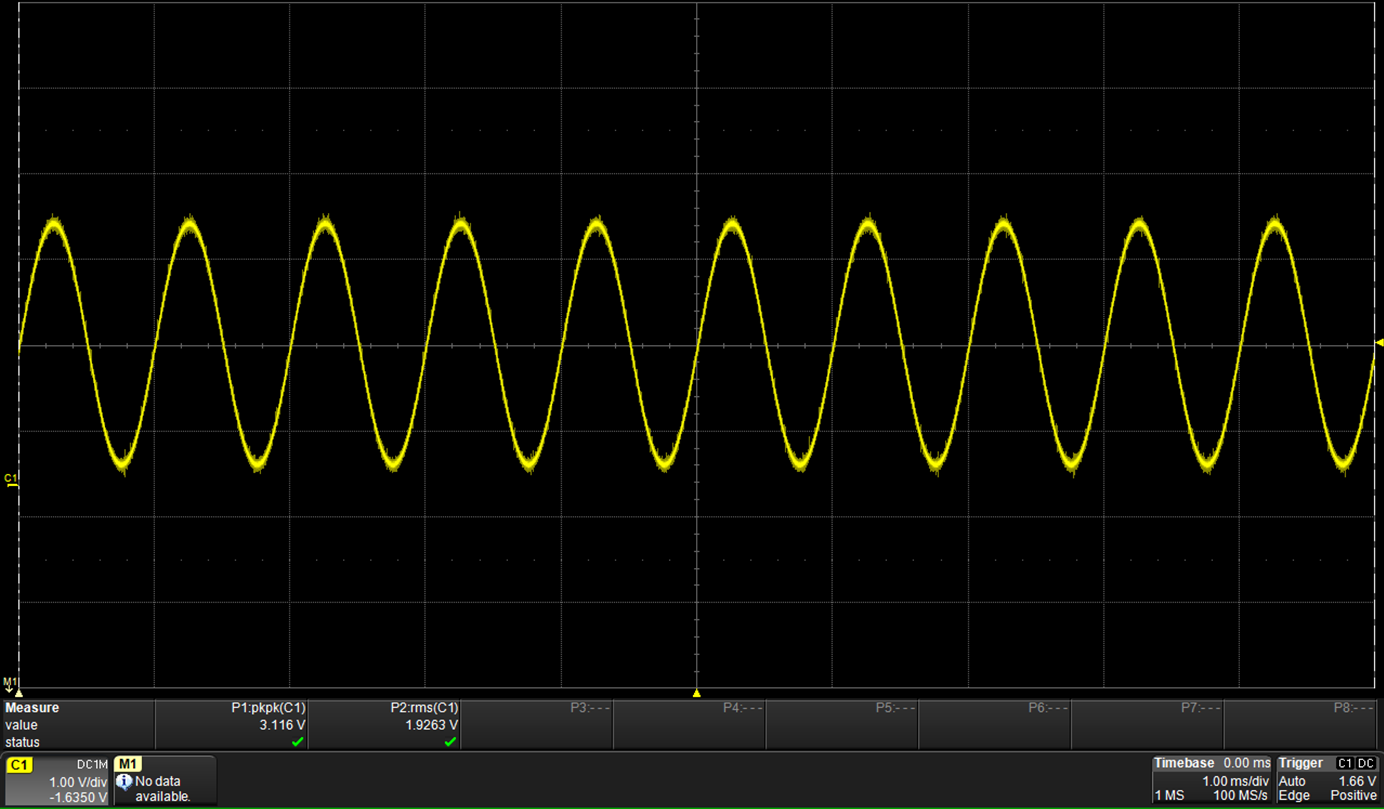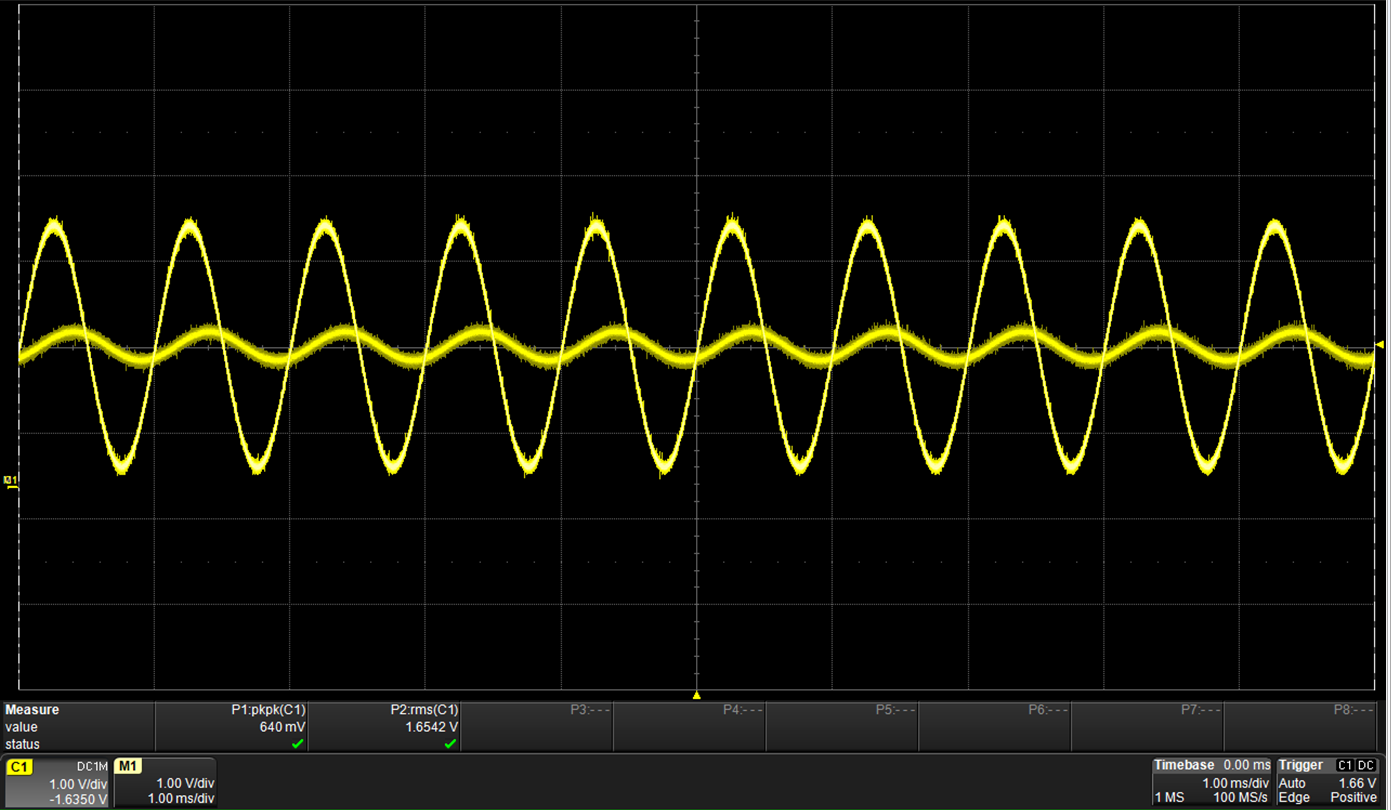SLAAEI4 August 2024 TAC5111-Q1 , TAC5212-Q1 , TAC5311-Q1 , TAC5312-Q1 , TAC5411-Q1 , TAC5412-Q1 , TAD5212-Q1
5.1.6.1 Thermal Foldback Response
For this test, the Thermal Foldback is enabled with a temperature threshold of 50°C and an initial die temperature of 28°C is observed using the temperature monitoring registers. A hot air stream is used to heat up the device. As the hot air is applied to the device, the temperature rises above the temperature threshold, thus triggering the Thermal Foldback algorithm to apply an output attenuation. Figure 5-3 shows the PPC3 parameters for the following example.
 Figure 5-3 Thermal Foldback PPC3
Configuration
Figure 5-3 Thermal Foldback PPC3
ConfigurationAt this initial temperature, a full-scale input signal is played. Figure 5-4 shows the output of the codec at full-scale. This plot shows the positive output of a differential signal and the amplitude of this signal is later compared to the output signal when Thermal Foldback is triggered.
 Figure 5-4 Thermal Foldback - Ambient
Temperature
Figure 5-4 Thermal Foldback - Ambient
TemperatureHot air is applied to the device and soaked to a final temperature of 81°C. The temperature monitoring registers read A38h.
Figure 5-5 shows the comparison of the output at the initial temperature and at the final temperature. The initial temperature shows an amplitude of 3.12Vpp while the final temperature shows an amplitude of 640mVpp. This plot shows an attenuation of around -19dB, close to the expected attenuation based on the Thermal Foldback settings.
 Figure 5-5 Thermal Foldback - Final
Temperature Data Appended
Figure 5-5 Thermal Foldback - Final
Temperature Data Appended